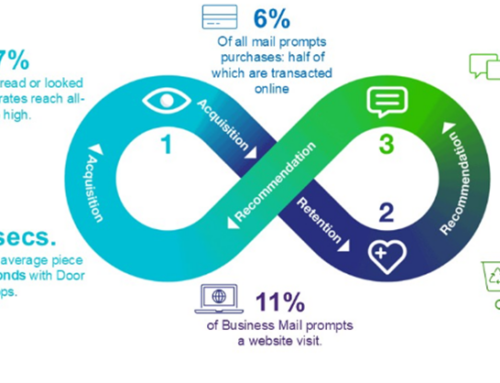Recent research by SeQuel Response reveals 61% of marketers increased their investments in direct mail automation over the past year. This trend underscores the transformative power of automation in enhancing the efficiency, personalisation, and effectiveness of direct mail campaigns.
Here are six ways automation is enhancing direct mail:
- Optimised Personalisation Through Data-Driven Insights
The era of generic mail pieces is over; now, campaigns are leveraging sophisticated algorithms to analyse customer data, tailoring messages to individual preferences and behaviours. This approach involves more than just addressing recipients by name—it’s about creating content and offers that resonate deeply with each unique recipient. The result is a significant boost in response rates and customer engagement, driven by the precise alignment of marketing messages with consumer interests.
- Seamless Integration with Digital Channels
Techniques such as QR codes, personalised URLs, and augmented reality (AR) serve as bridges between physical and digital experiences, enhancing user engagement and providing detailed tracking and measurement capabilities. This hybrid approach not only amplifies reach but also ensures that marketing efforts are cohesive and comprehensive.
- Efficiency and Cost Optimisation
Investment in automation is streamlining the entire direct mail process—from design and data processing to printing and distribution—minimising manual intervention and reducing the potential for errors.
Furthermore, real-time campaign optimisation, powered by AI, allows for continuous adjustments based on response data, ensuring that each campaign is as effective as possible. This capability not only enhances ROI but also allows businesses to reallocate resources more strategically.
- Precision Targeting and Analytics
AI and machine learning significantly enhance targeting precision in direct mail campaigns. By analysing vast datasets, these technologies can identify and predict the segments most likely to respond to specific marketing messages. This level of precision reduces waste and enhances the efficiency of marketing expenditures.
- Commitment to Sustainability
We’re also seeing an emerging trend in mailers using automated systems to optimise material usage and reduce waste, aligning with environmental concerns and appealing to eco-conscious consumers. This commitment to sustainability not only enhances brand reputation but also meets the growing demand for responsible business practices.
- Advanced Data Processing and Hygiene
Clean, accurate data is the foundation of effective personalisation and targeting. Automated data hygiene processes such as our portfolio of award-winning solutions ensure that mailing lists are free from errors, duplicates, and outdated information, significantly enhancing deliverability and campaign effectiveness. The automation process begins with data cleansing at the source within the CRM/database, ensuring that all subsequent steps in the direct mail process are built on reliable and accurate data – this is why data hygiene is so important. Without it the entire campaign will be flawed.
Future Trends in Direct Mail Automation
Looking ahead, the direct mail industry is poised to embrace even more sophisticated technologies. For example, the rise of variable data printing (VDP). VDP is a transformative digital printing technology that enables the customisation of individual printed pieces within a single print run, enhancing personalisation and engagement. This technology supports the inclusion of personalised content such as names, addresses, images, and tailored messages based on demographic or behavioural data, significantly boosting response rates. Despite its high degree of customisation, VDP maintains efficiency by using digital processes that allow quick changes between individual pieces, making it ideal for short-run and on-demand printing. Relying on databases to store recipient information, VDP dynamically generates variable content, further enhanced by advanced data analytics and AI.
Automation in the direct mail industry is not just about improving efficiency—it’s about revolutionising how businesses connect with their customers. By embracing these advanced technologies, companies can create highly personalised, integrated, and impactful direct mail campaigns that stand out.





